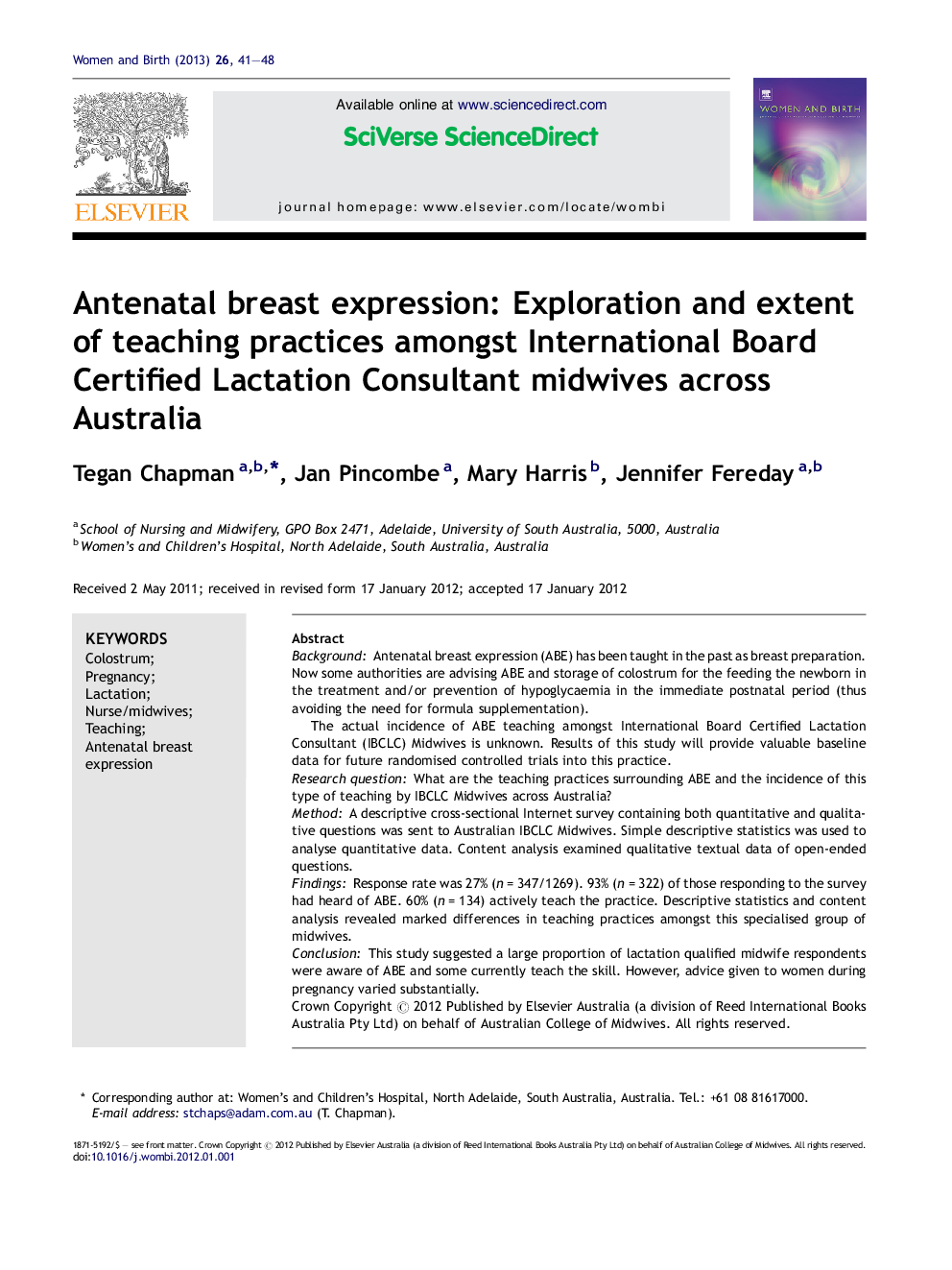| Article ID | Journal | Published Year | Pages | File Type |
|---|---|---|---|---|
| 2636074 | Women and Birth | 2013 | 8 Pages |
BackgroundAntenatal breast expression (ABE) has been taught in the past as breast preparation. Now some authorities are advising ABE and storage of colostrum for the feeding the newborn in the treatment and/or prevention of hypoglycaemia in the immediate postnatal period (thus avoiding the need for formula supplementation).The actual incidence of ABE teaching amongst International Board Certified Lactation Consultant (IBCLC) Midwives is unknown. Results of this study will provide valuable baseline data for future randomised controlled trials into this practice.Research questionWhat are the teaching practices surrounding ABE and the incidence of this type of teaching by IBCLC Midwives across Australia?MethodA descriptive cross-sectional Internet survey containing both quantitative and qualitative questions was sent to Australian IBCLC Midwives. Simple descriptive statistics was used to analyse quantitative data. Content analysis examined qualitative textual data of open-ended questions.FindingsResponse rate was 27% (n = 347/1269). 93% (n = 322) of those responding to the survey had heard of ABE. 60% (n = 134) actively teach the practice. Descriptive statistics and content analysis revealed marked differences in teaching practices amongst this specialised group of midwives.ConclusionThis study suggested a large proportion of lactation qualified midwife respondents were aware of ABE and some currently teach the skill. However, advice given to women during pregnancy varied substantially.
